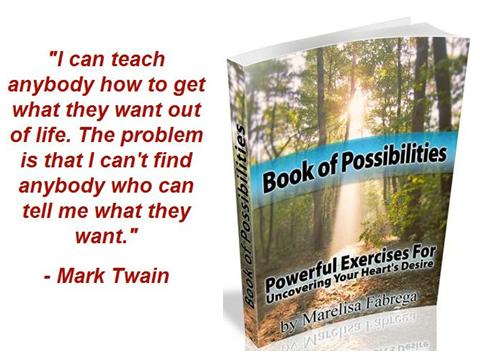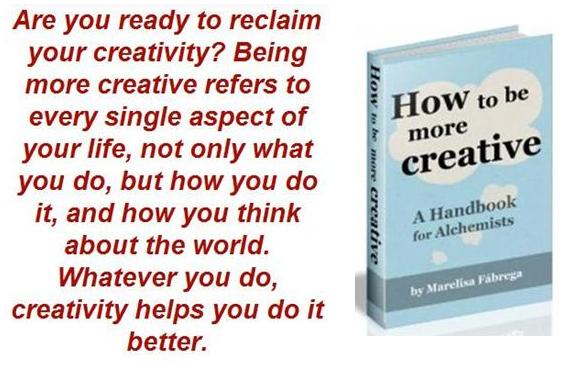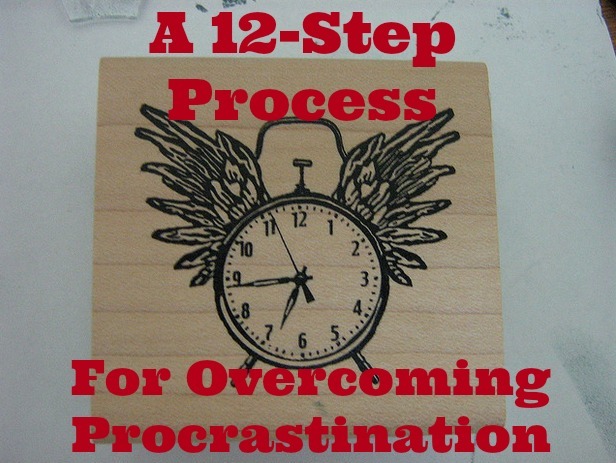
“To have another language is to possess a second soul.” – Charlemagne
I speak three languages:
- My native language is Spanish—since I’m from Panama, which is a Spanish speaking country.
- Then, when I was seven years old my family moved to Stamford, Connecticut, USA, for a two-year period. Since learning a new language at a young age is incredibly easy, I picked up English right away.
- I learned to speak my third language, Italian, because I took a year off between college and law school and spent it in Florence, Italy.
 I should speak a fourth language–French–but I don’t. I took French in middle school—in Costa Rica– and it was the only course in school that I didn’t do well in. This, although I was also taking French lessons at the Alliance Franϛaise after school. In high school I stopped taking French, and today I don’t even speak beginner’s French. However, I’ve made the valiant decision to once again make an attempt to learn French.
I should speak a fourth language–French–but I don’t. I took French in middle school—in Costa Rica– and it was the only course in school that I didn’t do well in. This, although I was also taking French lessons at the Alliance Franϛaise after school. In high school I stopped taking French, and today I don’t even speak beginner’s French. However, I’ve made the valiant decision to once again make an attempt to learn French.
Since I know that learning a foreign language is on most people’s bucket list, I decided to share with you the best tips that I’ve found while researching how to best tackle my goal of learning French. Here, then, are 21 tips and hacks for learning a foreign language:
1. Stop Arguing Against Yourself. Lots of people say something like the following to themselves: “I’d love to learn a foreign language, but I’m too old”, or “I’m just not good at languages”. If this sounds like you, you need to stop arguing against yourself.
In order to succeed at a goal, you have to believe that you’re capable of achieving it. If you try to learn a foreign language while you tell yourself that it’s hopeless, you’ve practically doomed yourself to fail. While it’s true that some people are better at learning languages than others, with the right strategy and with dedication, anyone can learn another language.
2. You Need Passion. Learning a new language takes a lot of hard work. That’s why, in order to succeed, you need to be passionate about speaking a foreign language. This consists of two different parts:
- First, you have to really want to learn another language.
- And, second, you have to be excited about learning the language that you choose. For example, you may really want to learn a romance language, while the thought of learning a Slavic language makes you cringe (or the other way around).
When I was in middle school I had absolutely no interest in learning French. Taking French lessons was something that my parents were forcing me to do. And I resisted with a vengeance. I paid little to no attention in class, and did the bare minimum of work to get a passing grade.
On the other hand, when I was in college I became obsessed with living in Italy for a while once I graduated. I don’t remember why, but I’m pretty sure it had something to do with an art course I was taking at the time. I took two semesters of Italian as part of my college course work, and I did very well. Then, I moved heaven and earth to travel to Italy and live there for a year.
Once I was living in Florence, I took an Italian language course. I studied the language on my own, and I spoke Italian to everyone I could. When I left Italy, I spoke the language fluently (since I look Italian, I was often mistaken for a local).
What was the difference between my attempt to learn French, and my attempt to learn Italian? The main difference was passion. I was passionate about learning Italian and could not have cared less about learning French (which I now regret, but live and learn).
When learning a new language, make this your new mantra: “I will do whatever it takes to learn this language.”
3. Consider Learning Esperanto. If you’re monolingual, you should consider making Esperanto your first foreign language. This is a strategy recommended by Benny, the Irish polyglot. In case you’ve never heard of Esperanto, it’s the most widely spoken constructed language in the world. Why would you want to learn Esperanto, when there are very few people who speak it? Here are three reasons:
- Since it’s an easy language to learn, learning Esperanto will give you confidence in your ability to learn another language. And confidence can go a long way.
- The more languages you know, the easier it is to learn the next one. For example, Italian is between Spanish and French. So now that I know Italian, I can use it as a bridge that will make learning French easier for me. Esperanto can act as a bridge, or a stepping stone, from your native language to the language that you want to learn.
- As Tim Morley explains in his TED Talk on Esperanto, most people learn to play the recorder in school, although it’s not an instrument that most people will continue to play after they’ve graduated. Why do schools teach the recorder? Because the recorder is a simple instrument, which means that it’s a simple way to learn music theory. Much in the same way, learning Esperanto is an easy way to learn language theory.
4. Plan Your Language Learning Strategy. When you’re taking an essay test, what’s the first thing that the teacher tells you? They tell you to plan your answers before you start writing. Likewise, before you start studying a new language, you should take some time to plan your language learning strategy before diving into the deep end.
One way to develop your language learning strategy is by using the book, Fluent Forever: How to Learn Any Language Fast and Never Forget It, as a guide. Other strategies include doing research online and asking people you know who can speak more than one language for advice.
Keep in mind that it’s important not to get stuck at the planning stage. Once you’ve spent some time doing research, and you have a good idea on how to proceed, get started. Then, simply apply a process of trial and error and make corrections to your language learning strategy as you go along. Keep doing whatever works, and discard any approach that doesn’t work for you, even if lots of other people swear by it.
Say the following to yourself: “Not everyone learns in the same way, and I will use the techniques that work best for me.”
5. Move and Get a Private Tutor. Maneesh Sethi–owner of “Hack the System”–wrote a post for the popular blog Zen Habits titled, “How to Learn a Language in 90 Days“. He indicates that in order to learn a language in 90 days you need to move to a country that speaks your target language for three months, and hire a private tutor for the first month that you’re there.
Of course, this is the ideal language learning strategy. Unfortunately, most people can’t follow this strategy due to monetary and time constraints, as well as having other obligations. However, this doesn’t mean that you should give up on your goal of learning another language. It just means that it’s going to take you longer than 90 days to achieve your goal.
6. Start With High Frequency Words and Phrases. You may be surprised to learn that, for most languages, there are 300 to 500 words that make up the bulk of the written and spoken language. Therefore, you should start by learning those words.
In addition, if you’re about to take a trip to a country that speaks your target language, you can add Dr. Paul Nation’s Survival Travel Vocabulary to the list of words and phrases that you’re going to learn first.
7. Focus On Language Content That’s Relevant to You. Once you know the high frequency words, focus on language that’s relevant to you. You’re more likely to learn vocabulary that’s related to your interests, than you are to learn the names of kitchen utensils (unless you happen to love kitchen utensils) and other stuff that you don’t care about.
Look at the following:
- Do you want to learn Italian so that you can understand opera? If so, then concentrate on words and phrases that you would hear in Puccini’s operas.
- Do you want to learn to speak Mandarin so that you can communicate with your business partners in China? Then focus on learning words and phrases in Mandarin that are related to business.
8. Set Specific Goals. Learning a new language is a goal, and we all know that goals should be specific. The goal “Learn to speak French”—or whatever language it is that you’re trying to learn–is too broad. You need to narrow it down and make it more specific. Here are some examples of specific goals:
- To learn to say the 100 most common phrases for travelers.
- To be able to understand simple instructions and directions.
- To be able to exchange basic greetings and pleasantries.
- To learn 50 food items and be able to order them in a restaurant.
- To be able to understand very basic phrases in my target language when people speak slowly and clearly.
As you achieve each of your specific goals, create new ones so that you progress step by step toward the big goal of “Speak French” (or whatever language you’re trying to learn).
9. Listen. Chris Lonsdale is a psychologist from New Zealand who runs a company in Hong Kong. He gave a TED Talk in which he explains his approach to learning a new language. Lonsdale explains that one of the first steps to learn a new language is to listen, a lot.
He calls this brain soaking. Lonsdale argues that it doesn’t matter if at first you don’t understand what you’re listening to. You’re listening to recognize patterns, words that repeat, and things that stand out. In addition, you’re listening to the rhythm of the language.
You have to continually listen to the sounds of the language that you’re trying to learn in order to train your brain to let in the new sounds. You can start by looking for podcasts in your target language, as well as scouring YouTube for interesting videos that will allow you to listen to the language that you’re trying to learn.
10. Study Pronunciation. For every sound, in any language, there’s a specific part of the mouth or throat that we use in order to achieve that sound. In order to make the sounds of a foreign language you have to move your mouth, tongue, and facial muscles—and use your throat–in the same way as native speakers do when speaking the language.
Fortunately, there are lots of resources to help you with this. For example, the most difficult sound for me to make in French is the “r” sound. The French “r” is completely different from the “r” in Spanish and the “r” in English. It’s something that I definitely need help with.
I’m learning how to pronounce the French “r” by watching videos on YouTube. As an illustration, this video explains that to pronounce the French “r”, you place the tip of the tongue against the back of your bottom teeth, while making a growling sound that comes from the back of your throat. (I still don’t have it down, but I’m getting there.)
11. Start Speaking As Soon As You Can. As soon as you can, start talking to native speakers in your target language (or people who speak the language fluently and have good pronunciation). Unless you want to learn a language in order to read great literature written in that language, or to write documents in that language, you need to speak the language as often as you can.
A great site for finding natives you can talk to is iTalki, which lets you hire online language speakers, as well as schedule a language exchange via Skype with someone wanting to learn your language.
12. Learn New Vocabulary Efficiently. Learn vocabulary items with plenty of audio-visual reinforcement. In addition, use image association. As an illustration, the French word for flip flops is “les tongs” (the flip flops). The word “tong” sounds like the English word, tongue—as in, the tongue in your mouth. If you look at a picture of flip flops, they looks like tongues.
Therefore, when I want to remember the French word for flip flops I see an image of flip flops in my mind, and I think the following: They look like tongues. The word for flip flop in French is “tong”.
13. Use Flash Cards. Let’s face it, learning another language involves a lot of memorizing. And one of the best ways to memorize things is by using flashcards. The old fashioned way to do this is to use index cards. Take a stack of cards and, on each one, write a word that you’re trying to remember on one side, and the English translation on the other. Then, every so often, look through your flashcards.
However, a much better approach is to use spaced repetition flashcarding. You can use a free online tool called Anki. It works as follows:
- The Anki web site shows you a word in your target language.
- When you see the word, you try to remember what the word means.
- Then press “Answer” and it will show you the translation.
- There are buttons for you to choose how easy, or hard, the word was for you to remember.
- If the word was very difficult for you to remember, then it will reappear within a few minutes. However, words that are easy for you to remember will reappear in about a month’s time.
Here’s a good explanation of how Anki works.
14. Use the Lexical Approach. The lexical approach was created by Michael Lewis. It involves thinking of vocabulary words as lexical units, or chunks, instead of memorizing words in isolation. A lexical chunk is any pair or group of words which are commonly found together, or in close proximity.
One example of this is learning the gender along with the noun (“la porte”), and the plural along with the singular (“les portes”). Another example is to learn the feminine form of adjectives, as well as the plural for both masculine and feminine. A third example is to include the preposition that is usually associated with the word that you’re learning.
In addition, vocabulary items should be learned along with other words that frequently co-occur with them—these are called collocations. Here are some examples of collocations in English:
- Brush your teeth.
- Commit a crime.
- Do the cooking.
Learning chunks instead of learning words in isolation will give you more bang for your buck. After all, chunks are the building blocks of language.
15. Learn Words in An Authentic Context. This is similar to the lexical approach described above. Instead of simply learning words in isolation, learn words in their authentic context. That is, learn phrases you’re likely to use for that word. For example, instead of just learning the word for “summer” in your target language, learn phrases such as the following:
- I’m going to the beach this summer.
- Last summer I traveled to Spain.
- I love the lazy summer months.
- They put on plays in the park during the summer months.
16. Learn Cognates. A cognate is a word that was borrowed from another language. Here’s a great quote on this by James Nicoll:
“The problem with defending the purity of the English language is that English is about as pure as a cribhouse whore. We don’t just borrow words; on occasion, English has pursued other languages down alleyways to beat them unconscious and rifle their pockets for new vocabulary.”
This is good because it means that English speakers will be able to recognize words from many other languages. One such language is French. And we can all thank William the Conqueror for this.
You may recall from your high school history class that in 1066 William the Conqueror–the Duke of Normandy–invaded England. As a result, many French words entered the English language. In fact, more than a third of all English words are derived from French. It’s estimated that English speakers who have never studied French already know 15,000 French words.
In addition, this relationship between words doesn’t just apply to English and French. There are many languages that share words. Take advantage of this to build up your vocabulary.
17. Use the Diglot Weave Technique. The diglot weave technique is a vocabulary learning method. It involves inserting foreign words into a sentence of a language you already know. As an example, I went to visit my sister yesterday, and as I stood in the lobby of her building waiting for the elevator, the elevator doors opened and an elderly gentleman walked out. He was wearing flip flops.
I looked at him and thought to myself: “Oh, look. That man is wearing les tongs (flips flops in French).” I inserted a word that I’m trying to learn in French into an English sentence. As another example, I sent out the following tweet to my followers on Twitter:
Here’s evidence that this technique works.
18. Get Creative. In point 5 of this blog post I said that the best way to learn a new language is to move to a country that speaks that language for three months and, while you’re there, hire a private tutor. Of course, not everyone can do this. However, this doesn’t mean that you should give up on your goal to learn another language. Instead, you need to get creative.
For example, even if you can’t move to a country that speaks your target language, you can still immerse yourself in the language. How? Here are some ideas:
- Download TV series and movies in your target language.
- Read books in your target language (even if you start off with children’s books).
- Listen to music in your target language.
- Frequent restaurants where you can order food in your target language.
- Read newspapers from your target language online.
- Label a few objects in your home with their names in your target language.
- Try making friends with people in your town who speak the language and hang out with them whenever you can.
19. Don’t Be Afraid to Make Mistakes. One of the biggest obstacles that you’ll face when trying to speak a new language is your fear of making mistakes and sounding stupid. However, know that no one speaks a new language perfectly from the get-go. You need to relax and stop being so self-conscious. Allow yourself to be someone who’s learning, making mistakes, and moving forward, one step at a time.
20. Be Patient. Although the internet is full of bloggers promising to show you how to learn a new language in a few weeks, a few days, and even in an hour, the truth is that learning a new language will take time (here are some general guidelines on how long it takes to learn a new language). However, rest assured that it takes time to learn to do anything well.
One of the keys to being patient is to stop putting all of your focus on the big goal of becoming fluent in your target language. Instead, set smaller goals along the way. Each time you achieve one of your smaller goals, it will give you the motivation to keep moving forward toward your big goal of fluency.
21. Be Consistent. You will never be able to learn a new language unless you study that language consistently. Set aside one-hour-a-day for language practice. Day by day that one-hour-a-day will add up, and soon you’ll have a good number of study hours under your belt. Then, watch in amazement how you start to communicate effectively with others using your new language.
Conclusion
Learning another language has many benefits, including giving your brain a good workout, improving your memory, gaining greater understanding of your native language, expanding your job opportunities, and making you more worldly.
Use the 21 tips and hacks above and get to work on acquiring a second, third, or fourth language. Live your best life by learning a foreign language.













Related Posts:
Did you enjoy this article? Subscribe to “Daring to Live Fully” by RSS or by email, and get free updates.























 Marelisa Fabrega is a lawyer and entrepreneur. She holds a Bachelor of Science in Business Administration from Georgetown University in Washington, D.C., as well as a Juris Doctor from the Georgetown University Law Center. You can learn more about her
Marelisa Fabrega is a lawyer and entrepreneur. She holds a Bachelor of Science in Business Administration from Georgetown University in Washington, D.C., as well as a Juris Doctor from the Georgetown University Law Center. You can learn more about her 





